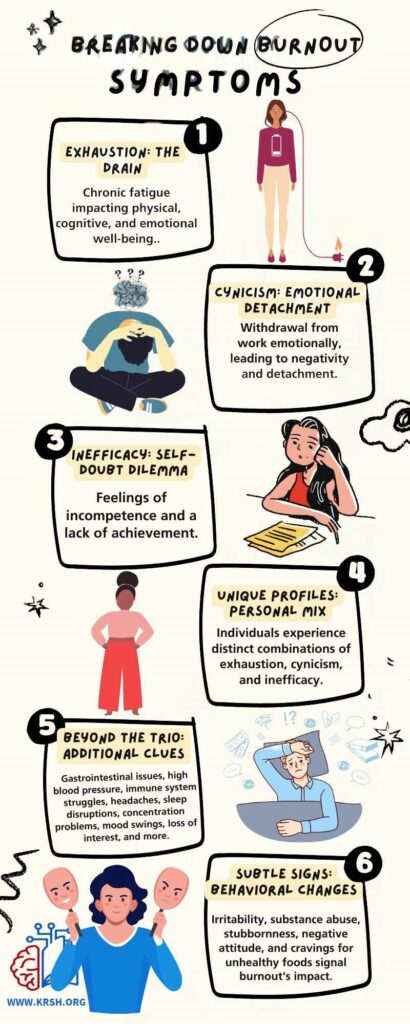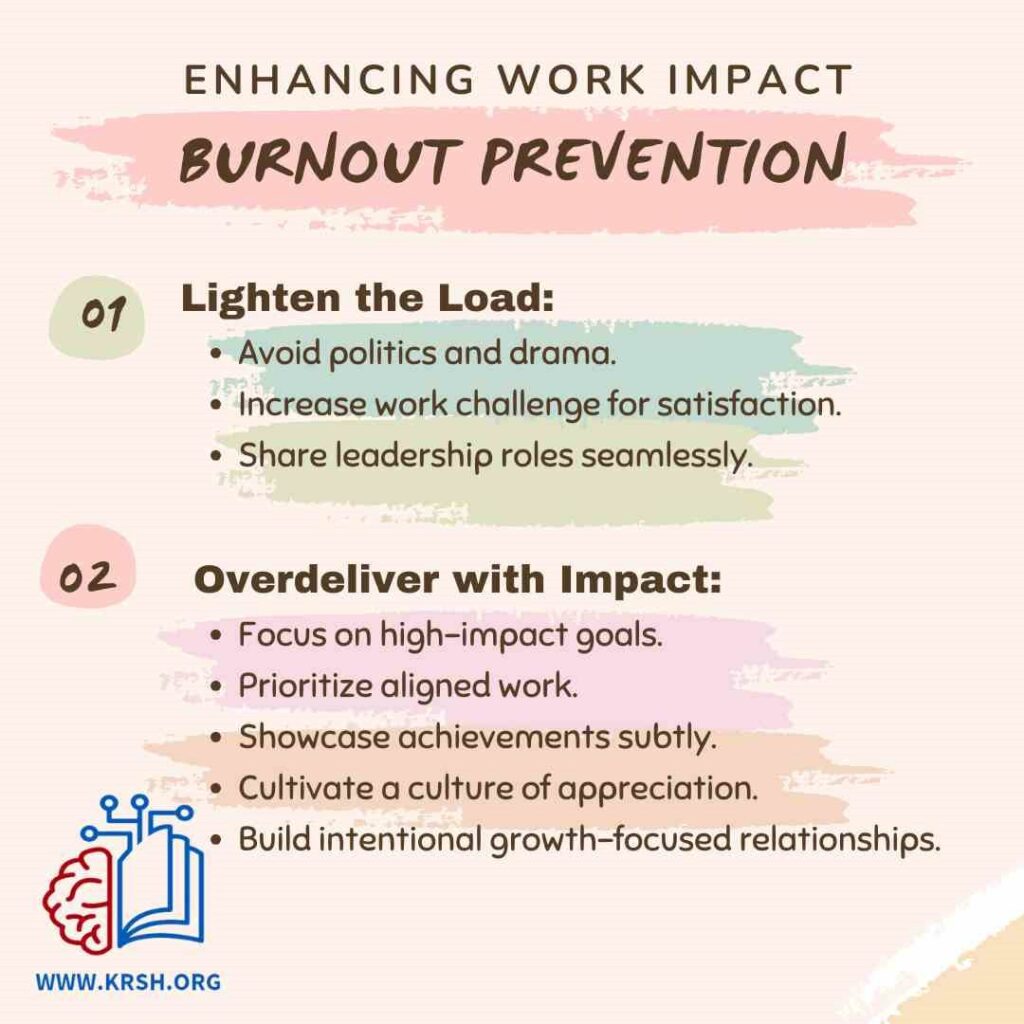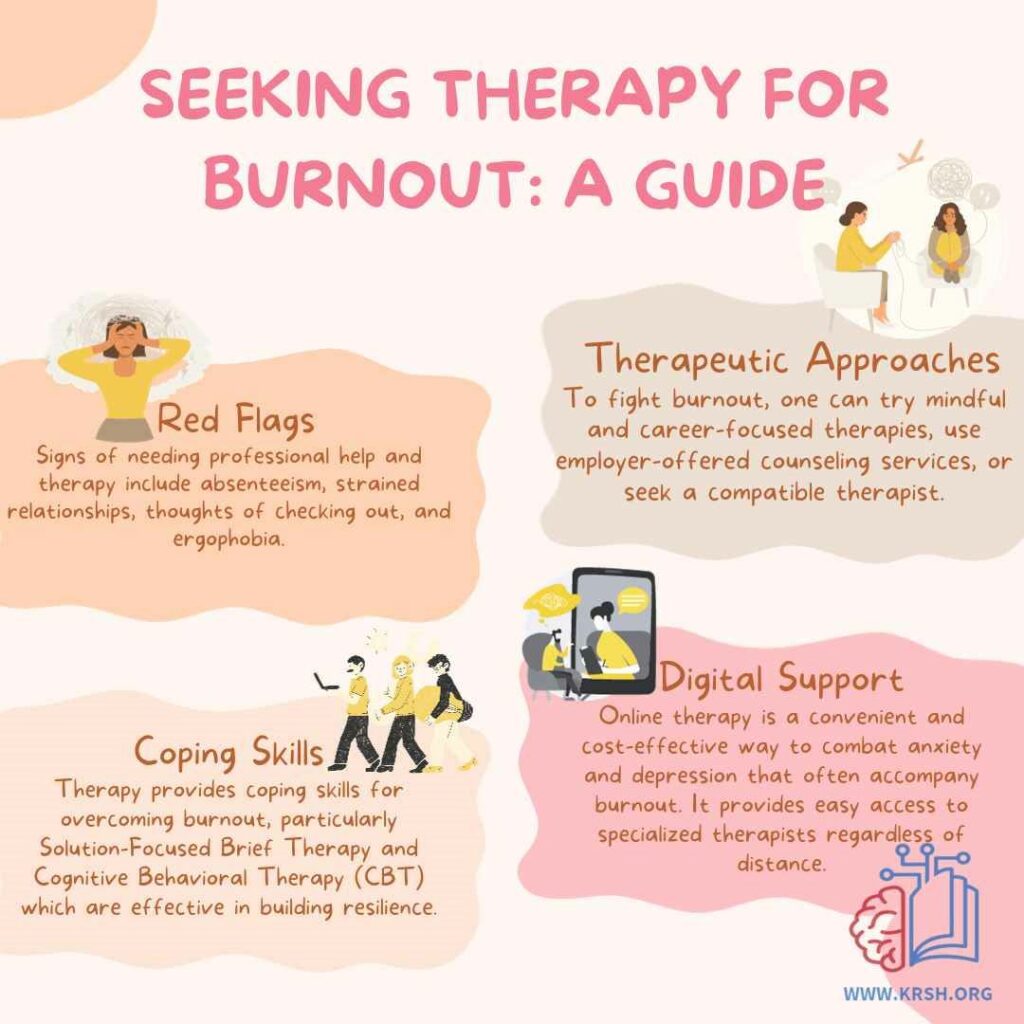Burnout is a prevalent issue among Indian employees, with a shocking 59% reporting symptoms, as revealed by a recent McKinsey Health Institute survey. This alarming trend encompasses severe exhaustion at 62%, mental distance at 59%, cognitive impairment at 67%, and emotional impairment at 58%. Burnout isn’t just a statistic; it has a domino effect on mental health, relationships, and long-term career prospects.
Identifying burnout is crucial, thanks to psychologist Christina Maslach’s three-part saga: exhaustion, cynicism, and inefficacy. Exhaustion drains physical and emotional energy, cynicism creates emotional distance, and inefficacy brings feelings of incompetence. Beyond these, burnout manifests in various physical and emotional symptoms, highlighting its pervasive impact.
Recovery and prevention strategies involve prioritizing self-care, shifting perspectives, reducing exposure to stressors, and seeking interpersonal connections. Establishing healthy boundaries, prioritizing sleep, investing in total well-being, and enhancing work impact contribute to a holistic approach. By acknowledging burnout’s presence and adopting proactive measures, we pave the way for a healthier and more fulfilling work life.
Burnout Among Indian Employees – A Disturbing Trend
In a recent survey conducted by the McKinsey Health Institute in 2023, the mental well-being of over 30,000 employees across 30 countries was examined. Shockingly, Indian employees emerged with the highest levels of mental distress among the surveyed nations.
Breaking down the numbers, a staggering 59% of individuals in India reported experiencing symptoms of burnout. This integrated view includes cognitive and emotional impairment, exhaustion, and a troubling mental distance from work.
62% of respondents in India reported severe exhaustion, describing a profound loss of energy that translates into both mental and physical tiredness. For 59% of individuals, there was a noticeable mental distance, indicating a strong aversion or reluctance to engage with work. A concerning 67% reported cognitive impairment, encompassing attention and concentration deficits, memory problems, and poor mental performance. Additionally, 58% experienced emotional impairment, characterized by intense emotional reactions and feeling overwhelmed by emotions.
The Domino Effect of Burnout
Research indicates that burnout has been associated with increased alcohol and drug use, producing feelings of futility and alienation, negatively impacting relationships, and undermining long-term career prospects. The prevalence of burnout is not just a statistic; it’s a serious concern that demands attention and action.
Breaking Down the Symptoms
Thanks to the groundbreaking work of psychologist Christina Maslach, you can identify burnout easily—a three-part saga fueled by chronic job stressors. Let’s unravel the tale of exhaustion, cynicism, and inefficacy.

Exhaustion: The Energy Drain
At the heart of burnout lies exhaustion, the sucker of physical, cognitive, and emotional fatigue. It’s the kind that saps your ability to work effectively and enjoy what you do. Blame it on the non-stop work culture, crazy time pressure, or simply drowning in tasks without control or interest. You feel like your fuel tank is empty but you just can’t stop running.
Cynicism: The Emotional Distance
Meet cynicism, also known as depersonalization—a slow erosion of engagement. It’s like pulling away from your work emotionally. Instead of being invested, you find yourself detached, negative, and even a bit callous. Work overload is one culprit, but it can also sneak in with high conflict, unfairness, or being left out of decision-making. Some fall into the trap of ignoring directives from seniors – which leads to battling bosses and a trash-talking habit. Persistent cynicism signals a loss of connection, joy, and pride in your work.
Inefficacy: The Self-Doubt Dilemma
Inefficacy brings feelings of incompetence and a lack of achievement. It often buddies up with exhaustion and cynicism, creeping in when your fuel is running low, and your connection to work is hanging by a thread. Take for example a coder questioning her skills when a release misses deadline. Or a salesguy smoking 4x cigarettes on the last few days of quarter.
Unique Burnout Profiles: Know Your Mix
While the components are buddies, individuals have unique burnout profiles. Michael Leiter’s research spills the beans—some are hardcore exhausted, some are cynical, and some grapple with reduced efficacy. Knowing your burnout profile helps tailor recovery strategies.
Severe Burnout Symptoms
Apart from the trio, burnout brings a posse of symptoms:
- Gastrointestinal problems
- High blood pressure
- Immune system on a sick spree
- Recurring headaches
- Sleep playing hide and seek
- Concentration issues stealing the spotlight
- Mood taking a nosedive
- Feeling worthless like yesterday’s news
- Loss of interest or pleasure, the silent fade
- Fatigue, the clingy companion
- Unable to shake off a common cold
- Shortness of breath without climbing a mountain
- Irritability or missing your charm
- Emotional rollercoaster (cue quick tears and rapid anger)
- Side-eyeing colleagues with suspicion and paranoia
- Substance abuse (more caffeine, alcohol)
- Stubbornness, rigid thinking, and selective hearing
- Negative attitude
- Craving for food high in sugar, fat and sodium
Differences between Anxiety, Burnout and Depression
The symptoms of anxiety, burnout and depression are overlapping. Self-diagnosis can lead to mis-diagnosis if there are deeper issues related to marital disharmony, personal relations, existential crisis, lifestyle issues and so on.
Some people misdiagnose their concern as burnout where it could be a deeper issue of existential crisis or depression. It is important to seek professional help in diagnosis if the issue impacts your day-to-day life or wellbeing.
Strategies for Burnout Prevention and Recovery

Prioritize Self-Care: Recharge Your Battery
Recovering from burnout begins with prioritizing self-care. Replenish your physical and emotional energy by embracing good sleep habits, maintaining proper nutrition, engaging in regular exercise, fostering social connections, and practicing activities that promote well-being. Explore meditation, journaling, or spending time in nature to regain balance. Assess your schedule to identify opportunities to eliminate non-essential tasks and negative influences, making space for rejuvenating activities. Employees find effective the shift towards incorporating flexible work options and setting limits on communication.
Shift Your Perspective: Rethink Your Approach
While relaxation addresses burnout symptoms, it’s essential to tackle the root causes. Evaluate your mindset and assumptions about your work situation. Identify aspects that can be changed and consider altering your perspective to mitigate negative impacts. For example, if exhaustion is a challenge, explore delegating tasks or reshaping your job for more control and fulfillment. Consult a professional therapist to reset your priorities, transitioning from a scarcity mentality to one of abundance. Or take a deeper look at your values to find out if your need to change your job.
Reduce Exposure to Job Stressors: Set Boundaries
Target high-value activities and relationships that trigger unhealthy stress. Communicate and set expectations with colleagues, clients, and family members regarding your workload. Client facing employees can manage work stressors by challenging clients’ crisis perceptions and establishing boundaries around work hours. It’s important to understand when to say no and staying firm in your decisions. If positive changes are challenging within your current environment, consider contemplating more significant shifts, such as a job switch.
Seek Out Connections: Interpersonal Resilience
Combat burnout, especially driven by cynicism and inefficacy, by seeking rich interpersonal interactions and continuous personal and professional development. Find coaches and mentors to cultivate positive relationships and learning opportunities. Volunteering to advise others can break the negative cycle. Collaborate with colleagues within your organization to offer mutual support, identify problems, and advocate for solutions. Join special interest groups or communities, to connect with peers and share experiences. Solo entrepreneurs can build a network of technical partners, fostering collaboration and boosting engagement.
Establish Healthy Boundaries: Show Up for Yourself
Preventing burnout starts with recognizing that not everything is your responsibility. Set healthy boundaries around your time and energy. Limit the number of health concerns addressed during a single patient visit, delegate tasks outside your role, and avoid shouldering every responsibility during clinical team shortages. Protect your well-being by advocating for yourself, understanding that your health is crucial for providing quality care to patients.
Prioritize Sleep: The Foundation of Well-Being
Prioritize sleep as a critical element of burnout prevention. Have a clean sleep routine, limit alcohol consumption for quality sleep, and choose positions with limited on-call and overnight demands. If the workplace culture encourages overwork and sleep deprivation, consider reassessing your employment to prioritize your well-being. Recognize the significant impact of sleep on patient safety, outcomes, and your own mental health.
Invest in Total Well-Being: Balance the Scales
Physicians are human beings first, and their well-being extends beyond work. Invest in emotional, physical, social, workplace, and societal well-being. Engage intentionally in each area of your life, manage stress through activities promoting mental health, exercise, build a supportive community, and contribute to causes beyond work. Prioritize friendships and connections, both within and outside work, for improved physical and mental health. Engage in community activities to find meaning beyond your physician identity.
Enhancing Work Impact for Burnout Prevention

Reduce Phantom Workload: Lighten the Load
Burnout isn’t just about the amount of work; it stems from stressors like people issues and a lack of job security. Reduce the phantom workload by avoiding politics, drama, and being easy to work with. Increase the challenge level of your work to enhance job satisfaction. Seek projects with visible impact and stretch yourself. Share the leadership load by taking on leadership roles even before being promoted, fostering a culture where team members can step in and out of leadership roles seamlessly.
Overdeliver Selectively: Focus on Impact
Identify high-impact goals for your organization and excel at individual goals. Prioritize work that aligns with team and company goals. Seek recognition by finding subtle ways to showcase your work. Engage in personal branding and create a culture of appreciation in the workplace. Connect with new people in your organization intentionally, identifying those who can help you grow and learn. Build relationships with colleagues who share your values and contribute positively to your professional growth.
When to Seek Therapy for Burnout
You might handle burnout solo with self-care, but if it’s causing absenteeism, fractured relationships, or even thoughts of checking out, it’s time to talk to a pro. Ergophobia, a legit fear of work, is also a good reason to chat with a therapist.

Integrated, mindfulness-based, or career-focused therapists can tackle burnout. Your employer might offer counseling sessions, and if you’re new to therapy, ask for a referral. The key? Feel comfortable with your therapist—they should be your support squad.
Overcoming burnout alone is tough. Therapy, like solution-focused brief therapy, cognitive behavioral therapy equips you with coping skills. It might feel daunting, but therapy is proven to reduce mental health symptoms and set you on a path to recovery.
Embrace the digital age—online therapy works. It’s convenient, cost-effective, and comfortable. Choose from therapists specializing in your issue, no matter the distance. Studies show online therapy effectively combats anxiety and depression, common companions of burnout.